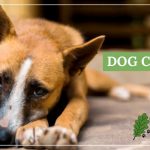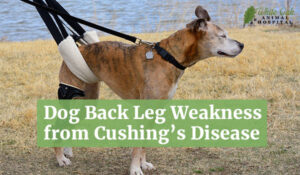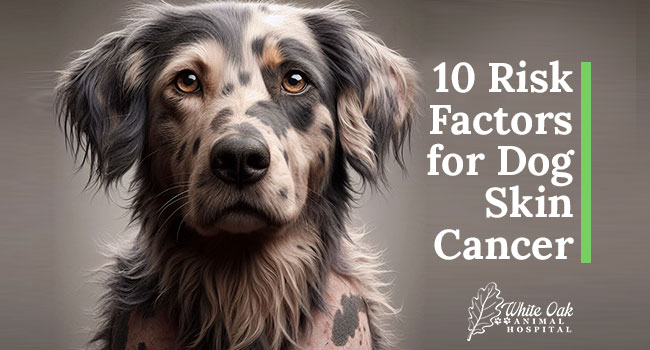
Dog skin cancer is a matter of considerable concern for pet owners, notwithstanding the protective layer of fur that typically envelops our loyal companions. It represents the prevailing form of tumor occurrence in canines, albeit the onset of treatment at an early stage often leads to favorable outcomes.
Understanding Dog Skin Cancer
Dog skin cancer manifests in various forms, each with distinct characteristics and implications. Understanding these types is pivotal for pet owners in recognizing potential risks and symptoms.
One prevalent form is malignant melanoma, affecting pigmented cells termed melanocytes. Typically, benign melanocytomas may develop, but malignant melanomas can metastasize rapidly, particularly in the mouth or mucous membranes.
Squamous cell carcinoma, another common type, often arises due to sun exposure. These tumors can be aggressive, potentially spreading to surrounding lymph nodes and causing significant tissue damage.
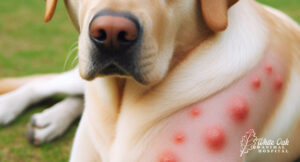 Mast cell tumors represent the most frequent skin tumors in dogs, originating from mast cells within the immune system. While their precise cause remains unclear, genetic factors and hormonal influences are suspected contributors.
Mast cell tumors represent the most frequent skin tumors in dogs, originating from mast cells within the immune system. While their precise cause remains unclear, genetic factors and hormonal influences are suspected contributors.
Each type of dog skin cancer necessitates vigilant monitoring and prompt veterinary attention. Early detection significantly improves treatment outcomes, underscoring the importance of regular check-ups and awareness among pet owners. By understanding the nuances of these cancer types, individuals can better advocate for their furry companions’ health and well-being.
The Common Causes and Risk Factors
Understanding the causes and risk factors associated with dog skin cancer is crucial for pet owners in safeguarding their furry companions’ health.
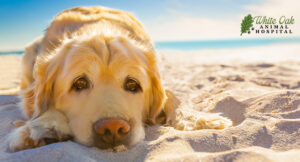 Exposure to sunlight stands as a prominent cause, especially in areas with sparse fur coverage, like the nose and ears. Light-colored or thin-coated dogs are particularly vulnerable to sun damage, which can elevate the risk of skin cancer.
Exposure to sunlight stands as a prominent cause, especially in areas with sparse fur coverage, like the nose and ears. Light-colored or thin-coated dogs are particularly vulnerable to sun damage, which can elevate the risk of skin cancer.
Trauma or repetitive licking of specific areas on the skin may also contribute to the development of cancerous growths in dogs. Additionally, genetic predispositions play a role in certain breeds, highlighting the importance of breed-specific considerations.
Exploring the ten key risk factors sheds light on potential triggers for dog skin cancer. These factors encompass sun exposure, genetic predispositions, trauma, and breed-specific vulnerabilities, among others. By recognizing these risk factors, pet owners can take proactive measures to mitigate potential threats and prioritize preventive care for their beloved companions.
Acknowledging these shared causes and risk factors empowers pet owners to take proactive steps in minimizing their dogs’ exposure to potential hazards and promoting overall skin health. Through vigilant observation and preventative measures, pet owners can play a pivotal role in safeguarding their dogs against the risks of dog skin cancer.
Recognizing Early Signs and Symptoms
In the realm of dog care, early detection of potential health concerns, particularly dog skin cancer, is paramount for ensuring the well-being of our beloved companions. Here are some essential pointers to assist pet owners in identifying signs of this condition. Firstly, it’s crucial to remain observant of any irregularities on your dog’s skin. These may manifest as small nodules or enlarging lumps that could potentially indicate the presence of skin cancer.
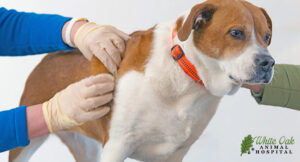 Pay close attention to any noticeable shifts in your dog’s skin tone, such as darkening or reddening, as these alterations may serve as early indicators of skin cancer development. Additionally, take notice of any wounds or sores on your dog’s skin that linger or worsen over time. Such persistent issues could be suggestive of underlying skin cancer concerns that require prompt attention. Be mindful of any changes in your dog’s behavior, particularly concerning signs of unusual itching or discomfort.
Pay close attention to any noticeable shifts in your dog’s skin tone, such as darkening or reddening, as these alterations may serve as early indicators of skin cancer development. Additionally, take notice of any wounds or sores on your dog’s skin that linger or worsen over time. Such persistent issues could be suggestive of underlying skin cancer concerns that require prompt attention. Be mindful of any changes in your dog’s behavior, particularly concerning signs of unusual itching or discomfort.
These symptoms, especially when localized to specific skin areas, could signify skin irritation or the presence of cancerous growths. Regularly monitor your dog’s skin for any areas experiencing hair loss or thinning, as such occurrences might serve as early warning signs of skin cancer or other dermatological conditions that warrant investigation.
By remaining vigilant and attentive to these early signs and symptoms, pet owners can play a proactive role in their dog’s health. Prompt recognition of potential concerns allows for timely veterinary evaluation and intervention, which can significantly impact outcomes and contribute to the continued well-being of our cherished canine companions.
Diagnostic Procedures
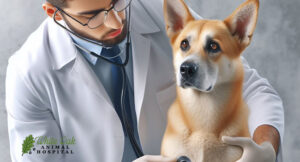 When it comes to diagnosing dog skin cancer, veterinarians typically rely on a variety of diagnostic procedures to confirm the presence of this condition. One commonly used method is a thorough physical examination, where the vet carefully inspects the dog’s skin for any abnormalities, such as lumps, bumps, or changes in color.
When it comes to diagnosing dog skin cancer, veterinarians typically rely on a variety of diagnostic procedures to confirm the presence of this condition. One commonly used method is a thorough physical examination, where the vet carefully inspects the dog’s skin for any abnormalities, such as lumps, bumps, or changes in color.
Additionally, veterinarians may opt to perform a fine needle aspirate or biopsy, where a small sample of tissue is collected from the suspicious area and examined under a microscope to detect any cancerous cells. Imaging techniques like X-rays or ultrasounds may also be utilized to evaluate the extent of the cancer and identify any potential spread to nearby tissues or organs.
In some cases, blood tests may be conducted to assess the overall health of the dog and determine if there are any abnormalities. These diagnostic procedures play a crucial role in accurately diagnosing dog skin cancer, enabling veterinarians to develop an appropriate treatment plan tailored to the specific needs of each dog.
By undergoing these diagnostic tests, pet owners can gain valuable insights into their dog’s health and take proactive steps to address any potential concerns related to skin cancer.
Available Treatment Options
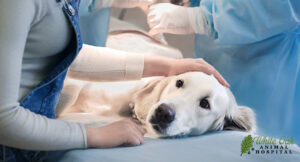 When it comes to treating dog skin cancer, veterinarians have several options, each with its own level of effectiveness. One common approach is surgical removal of the cancerous tissue, which may be followed by additional treatments depending on the extent of the cancer and whether it has spread to other areas of the body.
When it comes to treating dog skin cancer, veterinarians have several options, each with its own level of effectiveness. One common approach is surgical removal of the cancerous tissue, which may be followed by additional treatments depending on the extent of the cancer and whether it has spread to other areas of the body.
Another option is radiation therapy, which uses targeted radiation to destroy cancer cells and shrink tumors. Chemotherapy, which involves the use of powerful drugs to kill cancer cells, may also be recommended in some cases, either alone or in combination with other treatments.
Additionally, immunotherapy, which harnesses the body’s immune system to fight cancer, is becoming increasingly popular as a treatment option for dog skin cancer. The effectiveness of these treatments can vary depending on factors such as the type and stage of the cancer, as well as the overall health and age of the dog.
It’s important for pet owners to work closely with their veterinarian to determine the best course of treatment for their dog’s specific needs, taking into account factors such as potential side effects and quality of life considerations.
Staying vigilant and proactive about your dog’s health is crucial in detecting and managing dog skin cancer. If you notice any concerning signs or symptoms, such as lumps, changes in skin color, persistent sores, unusual itching, or hair loss, it’s essential to seek veterinary care promptly.
 At White Oak Animal Hospital, we understand the importance of early detection and offer comprehensive diagnostic procedures and treatment options tailored to your dog’s needs. We also offer alternative treatments such as supplements, food therapy, and herbs. With over 28 years of experience and a commitment to integrative care, including TCVM Telemedicine consultations, we provide specialized care not available elsewhere.
At White Oak Animal Hospital, we understand the importance of early detection and offer comprehensive diagnostic procedures and treatment options tailored to your dog’s needs. We also offer alternative treatments such as supplements, food therapy, and herbs. With over 28 years of experience and a commitment to integrative care, including TCVM Telemedicine consultations, we provide specialized care not available elsewhere.
Your dog’s well-being is our top priority, and we are here to support you every step of the way on your pet’s health journey. Schedule an appointment with us today to ensure the best possible outcome for your beloved companion.
Frequently Asked Questions
What are the main causes of dog skin cancer?
Dog skin cancer can be caused by various factors, including exposure to sunlight, genetic predispositions, trauma, and breed-specific vulnerabilities. Sun exposure, especially in areas with sparse fur coverage like the nose and ears, is a prominent cause, while certain breeds may have a higher risk due to genetic factors.
How can I protect my dog from developing skin cancer?
To help prevent skin cancer in dogs, it’s essential to minimize sun exposure, especially during peak hours of the day. Providing shade, using pet-safe sunscreen, and limiting outdoor activities can all help reduce the risk. Regular check-ups with Dr. Damron are also crucial for early detection and intervention.
What are the treatment options for dog skin cancer?
Treatment options for dog skin cancer vary depending on the type and stage of the cancer. Common approaches include surgical removal of the cancerous tissue, radiation therapy, chemotherapy, and immunotherapy. The best course of action will depend on factors such as the dog’s overall health and the extent of the cancer.
Related Posts
-
Top Dog Cancer Natural Remedies
Many natural dog cancer remedies are available today. Most dog cancer natural treatments can be…
-
Natural Remedies Are Best for Dog Dry Skin and Dandruff
Dog dry skin and dandruff is common. In fact, veterinarians see pets every day with…
-
Benefits Of Natural Herbs For Dog Dandruff
Does your pup have dog dandruff? Additionally, they may also have: Occasional dry, lusterless coat…
-
How To Identify And Treat Dog Cancer
Dog cancer is an unfortunately common malady. Common causes of dog cancer include environmental pollution,…




